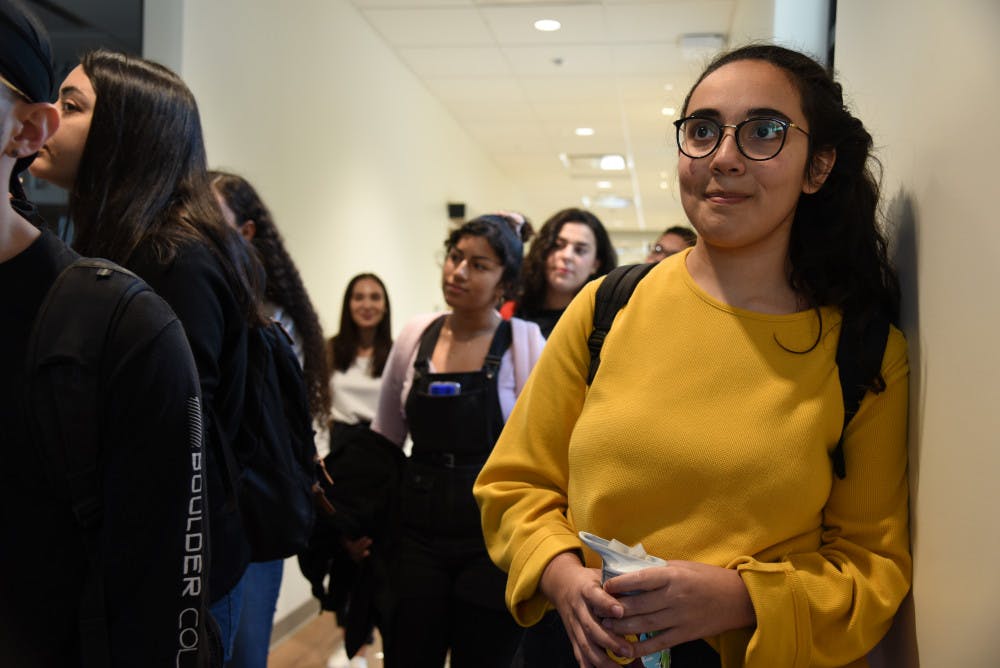More than 50 years ago, Mexican American high school students in the southwestern part of the U.S. walked out of schools to protest the removal of their culture from their schools’ curriculums.
It was the start of Latinx studies, said Nicholas Vargas, a UF professor who’s teaching a class on the topic in the UF Institute of Hispanic-Latino Cultures’ new space since its reopening in November. This is the first class to ever be held in the space, as of Wednesday.
“They walked out so we can walk in,” Vargas told students at the porch of the institute — better known as La Casita — after about 20 students made a symbolic trek from Little Hall to the institute Wednesday afternoon to honor the student leaders.
Vargas, a professor at UF’s Center for Latin American Studies and the department of sociology, criminology and law, will teach the Introduction to Latinx Studies class every Monday, Wednesday and Friday at 3 p.m. throughout the rest of the spring semester.
The class, which students have to register for on ONE.UF, will focus on issues related to Latinx cultural identity and provide students with greater knowledge of how Latinx people have contributed to the foundation of the U.S., Vargas said. There are still a limited number of seats open for the class.
“We walk in, not out of protest, but we walk in out of appreciation of those who came before us,” Vargas said. “We walk in to learn their stories, to recover their history and to value Latinx lives within the context of the U.S.”
After Vargas spoke, the class was led on a tour of La Casita by Hispanic-Latino Affairs ambassador Maria Dominguez, a 19-year-old UF linguistics sophomore, who is also in the class.
La Casita’s original building opened in May 1994 after Hispanic and Latinx students petitioned for a space they could call theirs, according to the Institute’s website. In 2017, the structure was torn down alongside the UF Institute of Black Culture, and the extensive construction of both buildings cost $9.9 million.
In 2017, UF’s Multicultural and Diversity Affairs department announced plans to combine the two cultural institutes. Many students worried that by combining the houses the university would also be merging their cultures into one. This led students to protest and create a Facebook page called “#NoLaIBCita.” The protests delayed the opening of both buildings by about two years.
“We’re using this space to learn more about Latin America,” Dominguez said. “This is exactly what this space is for: to learn, to interact with others. It’s perfect.”
Contact Kaelyn Cassidy kcassidy@alligator.org. Follow her on Twitter @kaelyn_cassidy.
Abby Farah, a 20-year-old nutrition junior, tours the new La Casita space on Wednesday. “I think it is fantastic that the La Casita space is open to us, especially for this class," Farah said. "I think it’s going to be really important for us to appreciate the space that the university has provided and that so many students have worked so incredibly hard for."
Nicholas Vargas, an associate professor of sociology and Latin American studies, talks to students about the student leaders who demonstrated to make his class at La Casita possible on Wednesday.
Michael Schmitz, 21-year-old UF international studies junior, walks with Michelle Marino, a 20-year-old UF nutritional sciences junior, from Little Hall to the new La Casita building on Wednesday. Students made the symbolic trek to La Casita to honor student leaders who made their Latinx studies class possible.
Sofi-Nicole Barreiro, 21-year-old UF political science junior, and Karla Rivas, 21-year-old UF political science senior, smile as they tour the new La Casita on Wednesday. “I think it is really cool that we have a space where we can all gather and especially have class geared towards Latinx studies,” Rivas said.






